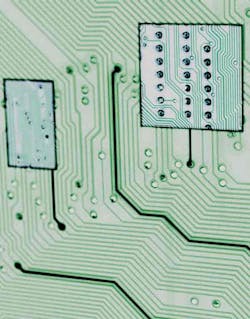Information technology (IT) networks interpret those signals and send that information to enterprise resource planning (ERP) programs and related applications. That data also flows to dashboard software, enabling managers to view continually updated key performance indicators. High-speed Internet or virtual private network connections simultaneously transmit data to suppliers and customers, while global positioning system (GPS) monitoring lets all parties pinpoint the exact locations of goods in transit. Such technology sustains event-driven manufacturing systems. With event-driven manufacturing, each event is recognized in real-time, and each event spurs other events to occur. Notification of a pending production run, for example, can prompt a supplier to schedule a replenishment delivery, while customer acceptance of finished goods can automatically generate an electronic invoice and corresponding journal entry. Immediate informationEvent-driven manufacturing provides managers with more immediate, more detailed information for making operational decisions and recognizing the impact that various events have on financial performance.Event-driven data allows managers to recognize and respond to such changes as increased product demand or internal production difficulties earlier. That enables the organization to more effectively manage the risks it faces, and to capitalize on emerging opportunities. Event-driven data lets manufacturers and their vendors optimize just-in-time inventory systems performance, thereby reducing inventory carrying costs.A vexing concern facing quality control managers is determining how many bad pieces were run when a sample analysis indicates production defects. Event-driven manufacturing dramatically shortens the cycle times required for analyzing production samples and taking appropriate action. That improves quality and lowers the costs associated with scrapping or reworking defective pieces.When integrated with related software, event-driven manufacturing automatically generates electronic order forms, shipping receipts and other documentation. Using electronic payment processes further reduces administrative and transaction costs. Sharing real-time data throughout the supply chain lets manufacturers focus more on producing made-to-order items, items already ordered by customers. That reduces dependence on sales for made-to-stock items. And, event-driven manufacturing lets companies respond and fulfill customer orders much faster, as well as provide real-time status reports regarding production and delivery. Implementing event-driven manufacturing requires thoroughly examining a company’s IT capabilities, including existing processing speeds, data storage capacities, software interfaces and compatibility with any newer desired hardware and software. Integrating data with customer and supplier systems requires those organizations to do likewise. Supply chain integration also requires assessing existing telecommunications hardwire and software. Such evaluations let manufacturers identify current event-driven manufacturing opportunities and determine the level of investment needed to attain further integration and automation.Global competition requires maximizing quality, keeping costs to a minimum and adapting quickly to marketplace changes. Fully realizing the benefits of outsourcing requires tight integration with suppliers, while building customer loyalty demands enhanced responsiveness. Amidst such pressures, event-driven manufacturing provides a means for companies to not only survive, but prosper. Christopher A. Gallo, CPA, [email protected], is Director of Manufacturing Services, and Principal of Nishball, Carp, Niedermeier, Pacowta & Co. P.C. Sassan S. Hejazi, Ph.D., [email protected], is the Director of Kreischer Miller’s Technology Solutions group. Gallo and Hejazi are both members of the CPA Manufacturing Services Association.
About the Author
Sign up for our eNewsletters
Get the latest news and updates

Leaders relevant to this article:
